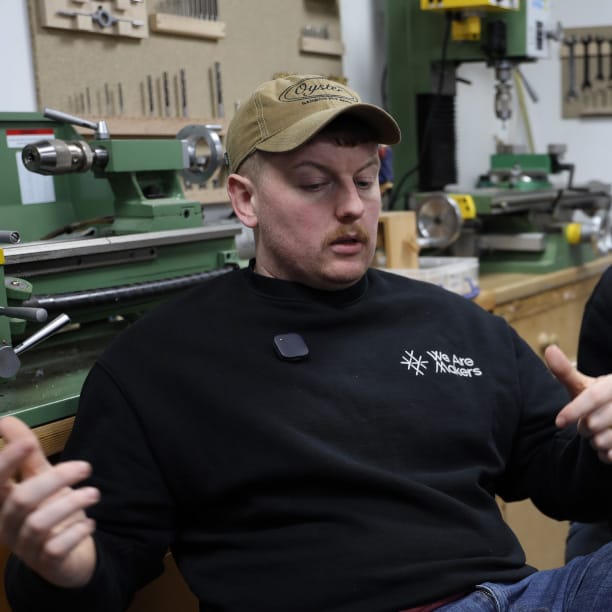Etai Rahmil Art and Pure Over
Etai Rahmil, a glass flameworking artist from Portland, Oregon, crafts intricate borosilicate glass pieces, merging art and functionality, with a special focus on the Colors of Sound collection.

Edition 4 Feature
We Interview: Etai Rahmil
Location: Portland, Oregon, USA
Photo Credit: ©Forest Gallien @forestoutside / ©Viet Mac @viet mac
What is it that you do and how do you do it?
My name is Etai Rahmil and I am a glass flameworking artist. I work with borosilicate glass to create replications of instruments, antiques and other fun objects that you see in the world. About 95% of the pieces that you see on my website are actually also functional pipes. I love making sculpture too, but turning an artwork into a functional object brings another level of complexity to a piece.
Most of the functionality of the pieces is hidden, as I like the overwhelming initial reaction to be about the form. It’s always a really fun surprise to then tell people that this sculpture is also a pipe. I love that little extra that I can give someone.
How did you get into glass in the first place?
I left high school and started going to the University of Oregon, though I really didn’t have any direction. I was just following the path that I think most people feel they need to follow, but I could soon tell that college wasn’t for me. I got a job at a local pipe shop and started to meet glass artists who were in town. Eugene happens to be the glass-blowing Mecca of the United States, with about 4,000 glass-blowers in this small town.
So, I was thrown into this job where I started getting interested in trying glass, and I took a beginner’s class at the University of Oregon Crafts Center. A couple of weeks into playing with glass and understanding how it works, and realising that I could make something with my hands, I just went all-in. Four or five months later, I dropped out of college and continued to pursue glass full-time when I wasn’t working at the pipe shop. For that first year or two, I would work all day at the pipe shop, get home at 9pm and blow glass until 4am.
How is it that so many glass artists have converged on the one small town?





